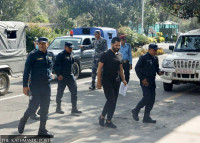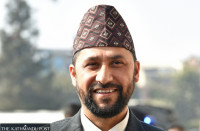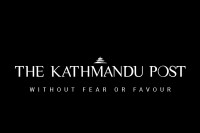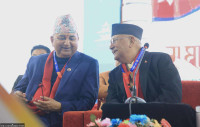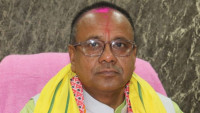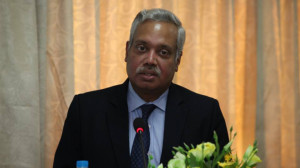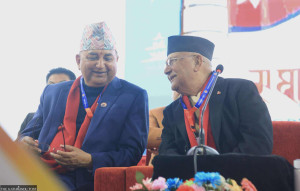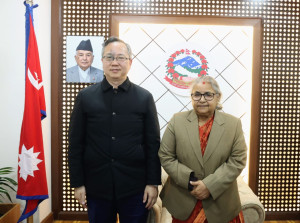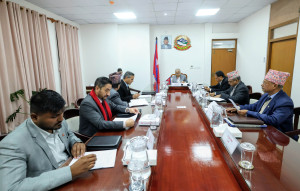National
Inside the ‘TOB’ controversy that has taken social media in Nepal by storm
The group denies any links to the Free Tibet movement, saying the viral photo of a TOB member holding a gun was taken from a music video, not the protest.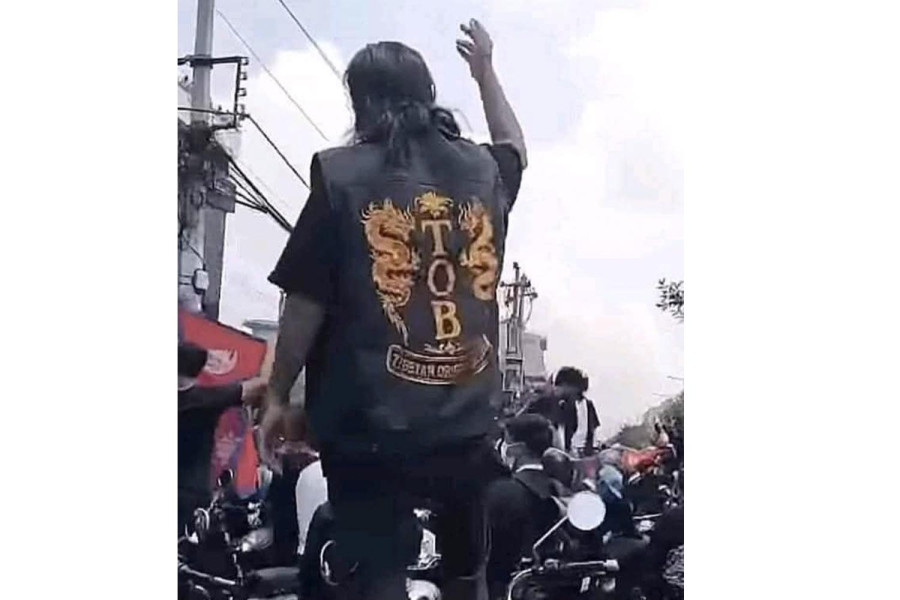
Aarati Ray
Since Saturday, an acronym has thrown Nepal’s social media sphere into a tizzy: ‘TOB’. The acronym first came into public view after multiple photos and videos on social media showed it emblazoned on the back of the black T-shirts worn by a few young men who took part in last month’s Gen Z protests.
Speculations have since run wild as to what the initials stand for, what the group is all about, and how it was linked to the Gen Z protests.
Various interpretations of the acronym have flooded social media, from ‘Tibetan Original Bloodline’, and ‘Tibetan Original Blood’, to, quite confoundingly, ‘The Balen Team’.
But what started as online curiosity has swiftly spiralled into a wave of disinformation, racialised narratives, and hate speech, with some anonymous handles going as far as issuing death threats to Tibetans in Nepal.
The controversy took off after a Facebook page called HTP Khabar posted a video by journalist Diwakar Sah on Saturday morning. In the video, Sah vaguely alluded to people wearing T-shirts emblazoned with the three letters, claiming he feared for his safety, scared he might be killed if he revealed more.
Soon after, social media users began combing through footage from the uprising, uncovering clips and photos of young men on motorcycles wearing T-shirts and jackets printed with ‘T.O.B.’
Amid this swirl of speculations, the most popular narrative that has emerged is that TOB stands for “Tibetan Original Bloodline,” and that members of the Tibetan refugee community were behind the protests. Hundreds of social media users, if not thousands, were then quick to accuse the community members of vandalism, extremism, and attempting to “hijack” the Gen Z movement.
The comments online have turned flagrantly xenophobic, with some calling for Nepalis of Tibetan origin to be attacked, expelled, killed or worse.
But what connections, if any, do the youths wearing TOB T-shirts have with Tibet?
Surendra Gurung, popularly known as Hakim, a rapper, artist, and adviser to the group that was photographed during the uprising, says the TOB group has no links to the Free Tibet movement, any external forces, or acts of vandalism. Speaking to the Post, Gurung called the online allegations wrong and harmful.
What is TOB, and why are some members wearing ‘Tibetan Original Blood’ T-shirts?
Gurung clarified that TOB stands for ‘The Original Brothers,’ not ‘Tibetan Original Blood/Bloodline’ as widely claimed online.
The group’s name appears as ‘T.O.B._Blood’ on Instagram. Their bio reads as “The Original Brothers — Our blood, our war, our legacy.” Their account, which has over 1,200 followers, lists T.O.B. as a social club.
Gurung explained that TOB is essentially a motorcycle collective, composed mostly of young men from diverse ethnic backgrounds, including a few whose ancestors are of Tibetan origin.
Videos and photographs circulating since Saturday show TOB members participating in the September 8 Gen Z-led protests, riding Royal Enfield motorcycles, popularly known as Bullet bikes, addressing crowds, and wearing distinctive group T-shirts.
Two main designs have been identified. The first, worn by most members, is a black T-shirt with the letters ‘TOB’ printed vertically in bold white letters across the centre, flanked by dragon-like patterns on both sides. They also bear the name ‘Hakim’ or letter ‘H’, an homage to Gurung (Hakim), who is widely popular in Nepal’s hip-hop community and is beloved by the group’s young followers.
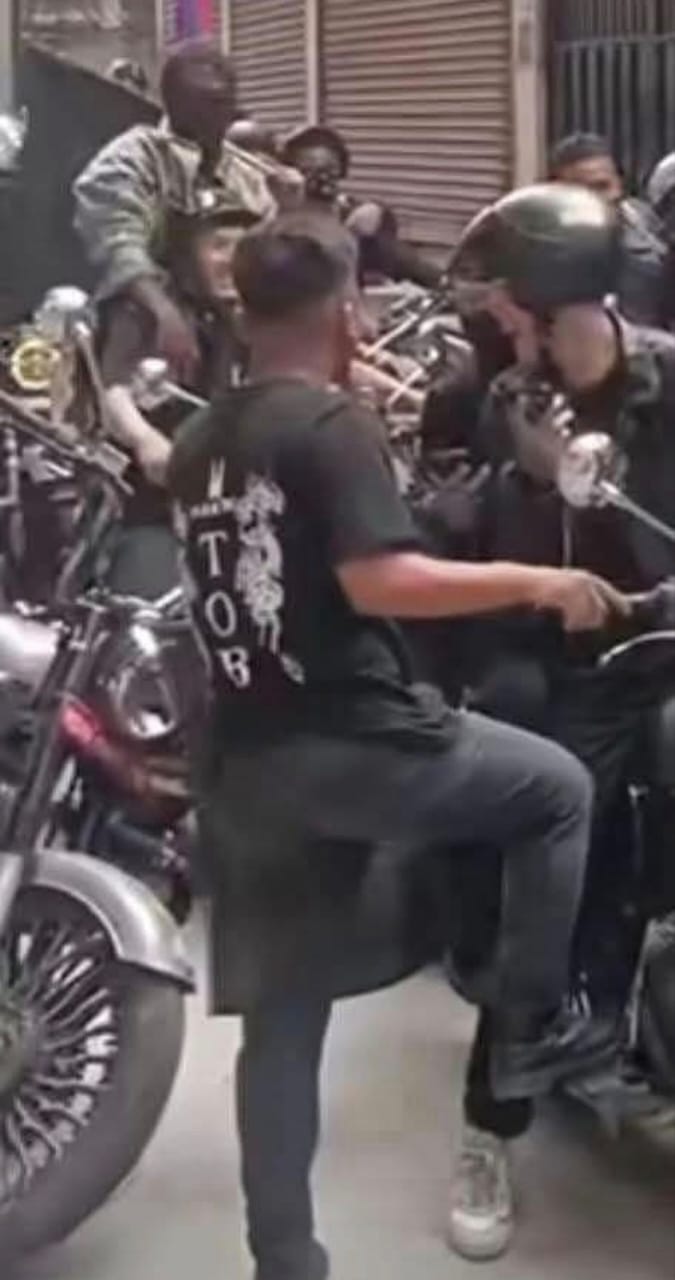
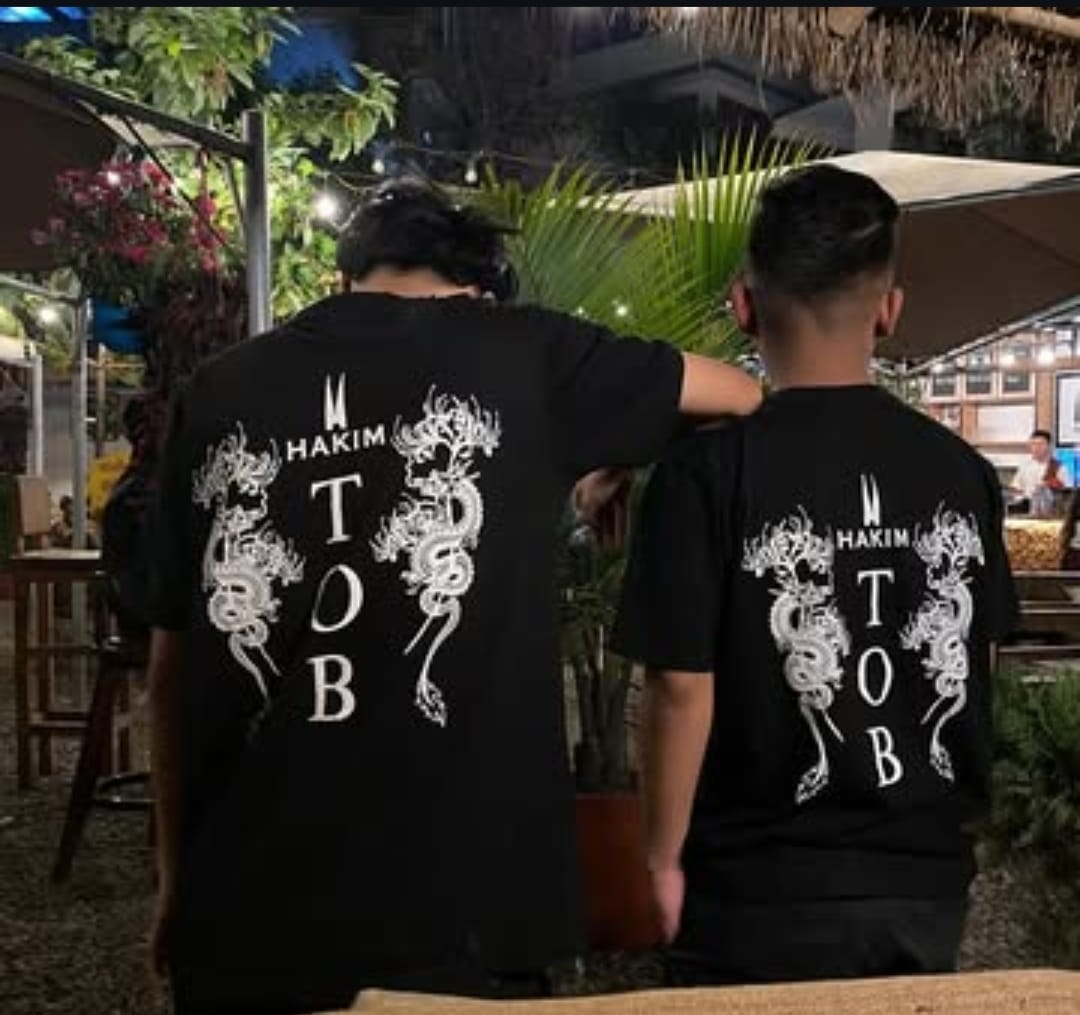
The second, more controversial, design is a black T-shirt with yellow dragon motifs and the words ‘Tibetan Original Blood’ printed across it. The individual wearing that version has been identified as Tenzin Dawa, TOB’s leader, whose videos and photos have gone viral.
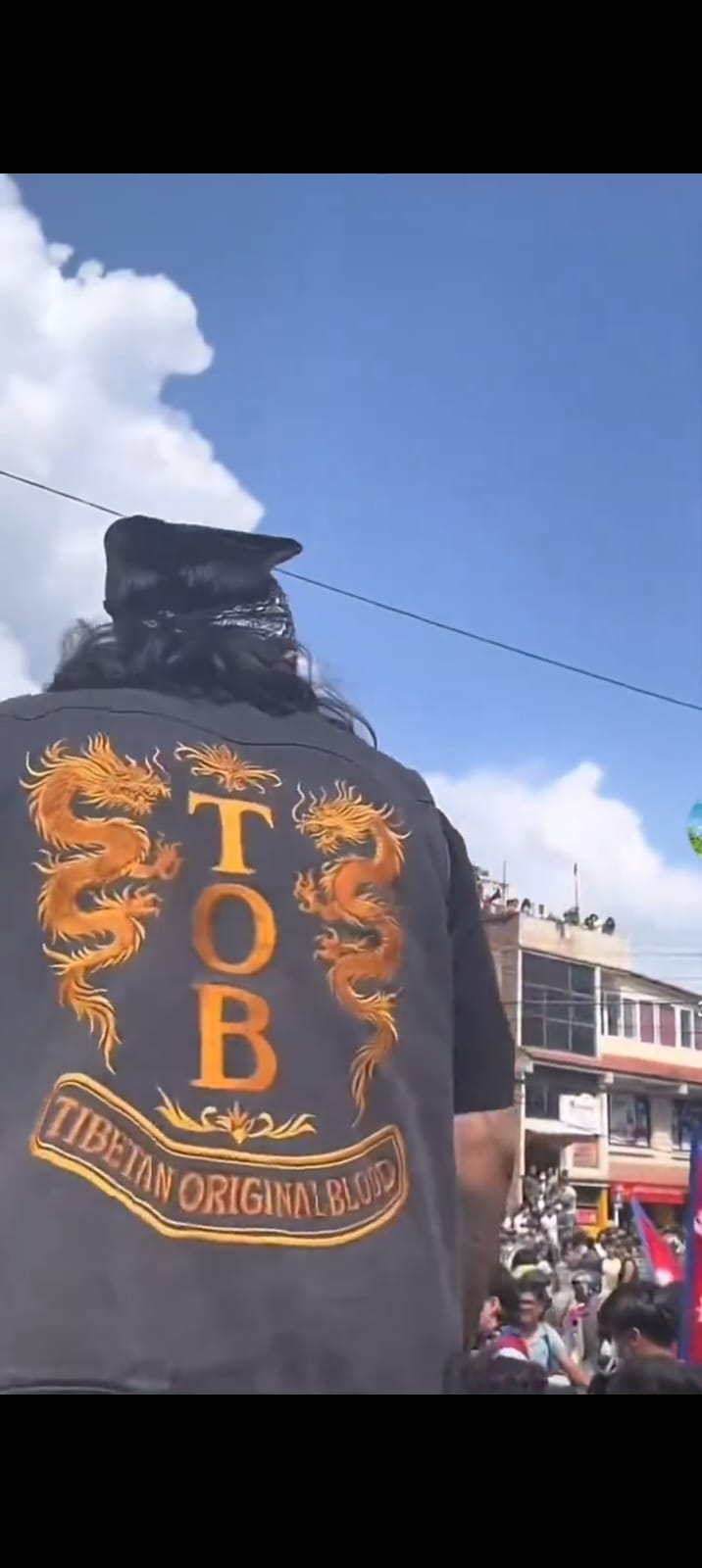
Gurung recounted that he first met the young bikers, mostly from Bauddha, about two years ago. The group, he said, included members from a variety of communities—Bhote, Sherpa, Tamang, Gurung, Tibetan, Bahun, and Chhetri, among others. At the time, they called themselves “Tibetan Original Blood.”
Fearing controversy, Gurung advised the group to rename itself. They then became “The Original Brothers” (TOB), also called TOB Blood.
According to Gurung, the claims that some TOB members, including Dawa, wore their old T-shirts printed with ‘Tibetan Original Blood’ during the protest are true, but he insists the context has been misunderstood and distorted.
Gurung says the phrase was never meant as a political slogan. Instead, he said, it represents a personal homage by members whose ancestors were of Tibetan origin, symbolising pride in their heritage and lineage, not affiliation with the Free Tibet movement.
“The group has no connection whatsoever to any political or separatist movement,” Gurung said. “Just like how Newar or Khas Arya communities in Nepal honour their origins and culture, some of our members sometimes wear T-shirts that reflect their ancestral roots.”
Gurung added, “These boys are Nepali citizens, just like their parents and grandparents. It’s painful to see this turn into racism and xenophobia… Almost every Nepali has ancestral roots tied to other regions due to our geography, so discriminating against them for that is unfair and ignorant.”
The Gen Z protest wasn’t the first time some members wore the older T-shirt printed with ‘Tibetan Original Blood’. They had also worn it on a few previous occasions during their motorcycle activities.
The group’s activities go beyond riding motorcycles. They have participated in social work and even worked in music videos with Gurung. Many of the roughly 40 members are students in schools and colleges and share an interest in rap and hip-hop culture, says Gurung.
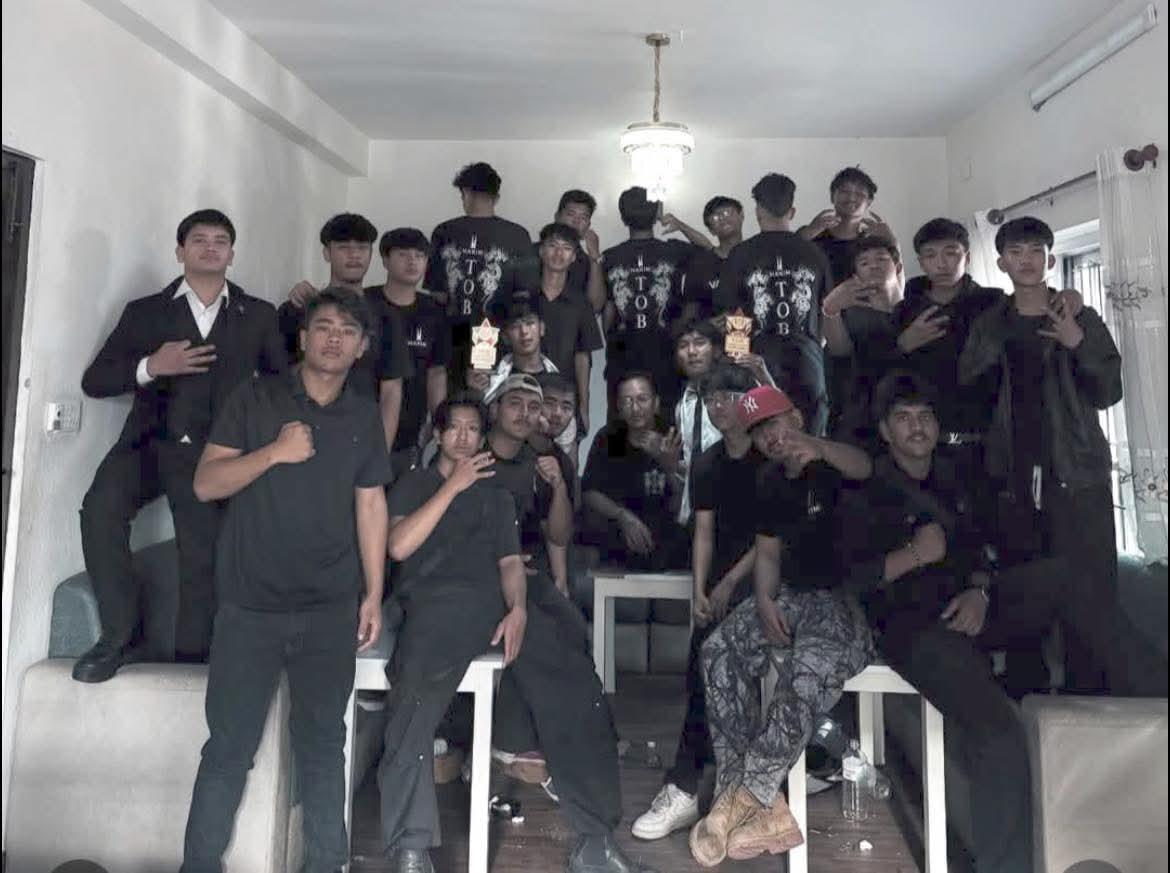
According to Gurung, the mostly Gen Z members of TOB joined the September 8 protest after seeing youth-led calls online, motivated, like thousands of other young Nepalis, by frustration over corruption and political dysfunction. “They went there because they believed in the cause,” Gurung said.
In a video shared on the group’s Instagram, TOB member Biraj Khadka also said they joined the protest after being called to help by their “Gen Z brothers and sisters.”
When clashes and gunfire broke out, the young bikers panicked and called him. “They’re just kids,” Gurung said. “Once the firing started, they ran in fear. I told them to go home. I was worried for their safety.”
He claims that members did not take part in any violent activities and that they did not join the protests on September 9, the second day.
Frustrated over the online backlash, Gurung said the group feels unfairly vilified. “We went there as Nepalis, angry at corruption, and hopeless about the system,” he said. “Now we’re being labelled as outsiders, non-Nepali, hijackers, and blamed for everything. It’s painful and unjust.”
TOB, however, has not been the only name linked online recently to the Free Tibet movement or for having Tibetan connections. After online news sites reported that Tashi Lhazom, a young climate activist from Humla, was being considered for a ministerial position in the Cabinet, online discussions quickly targeted her citizenship, based on bogus reports questioning her Nepali identity. They also accused her of involvement in the Free Tibet campaign and of having Tibetan connections.
The TOB controversy comes on the heels of this earlier episode.
“I don’t understand why the journalist [Diwakar] made such a video without proof, and why, a month after the protest,” Gurung said. “It feels like, with both controversies [involving Lhazom and TOB] happening at the same time, a small matter has been blown up into something big.”
The viral gun image controversy around TOB
Meanwhile, yet another image featuring Dawa has been making the rounds on social media since Sunday. This time, one showing him holding what appears to be a gun. The photograph has reignited speculations online, with many claiming it proves that TOB members were armed, instigated violence, and were part of the Free Tibet movement.
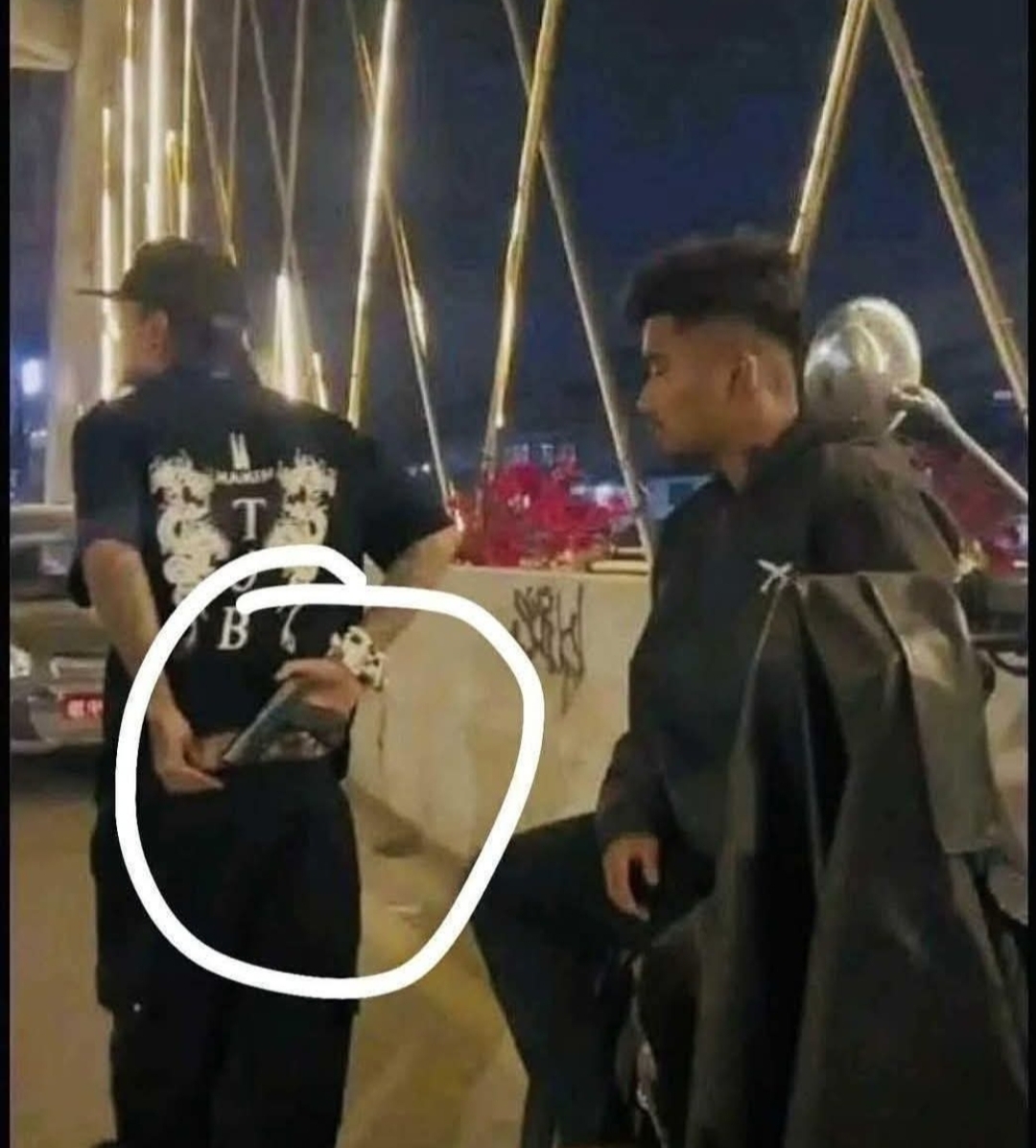
Others have questioned the authenticity of the image, suggesting it might be fabricated.
Gurung said that the picture is real but has been misrepresented. The image was taken months before the protests, on April 5, 2025, as part of a TikTok video shot by Dawa for a music video concept. Gurung claims that the gun seen in the image was plastic, not real, and had been used as a prop.
The Post has obtained the video from which the currently circulating photo was screenshotted. Its metadata also shows the video was shot in April.
The Post’s attempts to contact Dawa were unsuccessful.
“That video was just a trial concept for a possible music video,” Gurung said. “Tenzin had posted it on TikTok and even showed it to me back then. I told him to delete it, afraid of controversy. He did delete it, but apparently someone has saved it, and now it’s being circulated, falsely claiming it was from the protest. It was not.”
Gurung said that after the image resurfaced and began spreading, Dawa and other TOB members voluntarily went to the Police on Sunday to explain the situation.
Kathmandu Police Chief SSP Ramesh Thapa told Kantipur, the Post’s sister publication, that an investigation into the case is underway.
According to the police source, Dawa himself contacted the police. Dawa initially went to the Valley Crime Investigation Office, acknowledging that he was the person seen in the video.
“He even brought what appeared to be a pistol with him. Since we were investigating, the local police directed him to us,” a Kathmandu police officer told Kantipur. “Interrogation is ongoing.”
According to the police, the viral video itself is from some time ago. The District Police Office at Bhadrakali is currently quizzing Dawa.
“All in all, yes, some members wore T-shirts with ‘Tibetan Original Blood,’ but that doesn’t mean we’re part of any Free Tibet movement,” Gurung said. “These boys were there like any other Gen Z protesters, raising their voices against corruption. They joined the protest seeking change, nothing more, nothing less. Some have Tibetan ancestry, but they are as Nepali as anyone.”




 10.12°C Kathmandu
10.12°C Kathmandu
